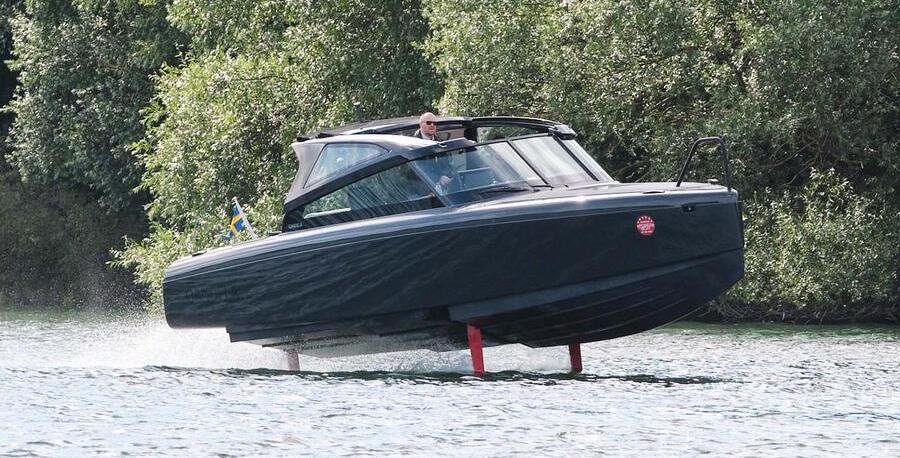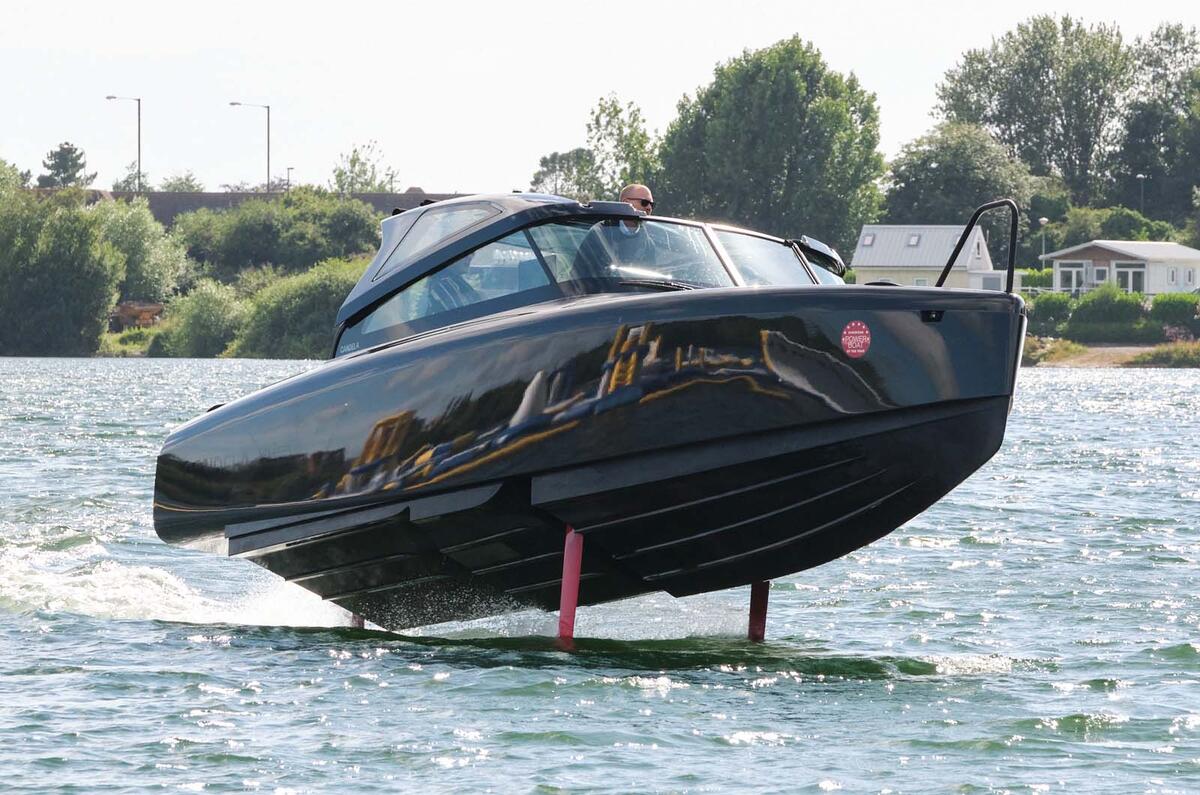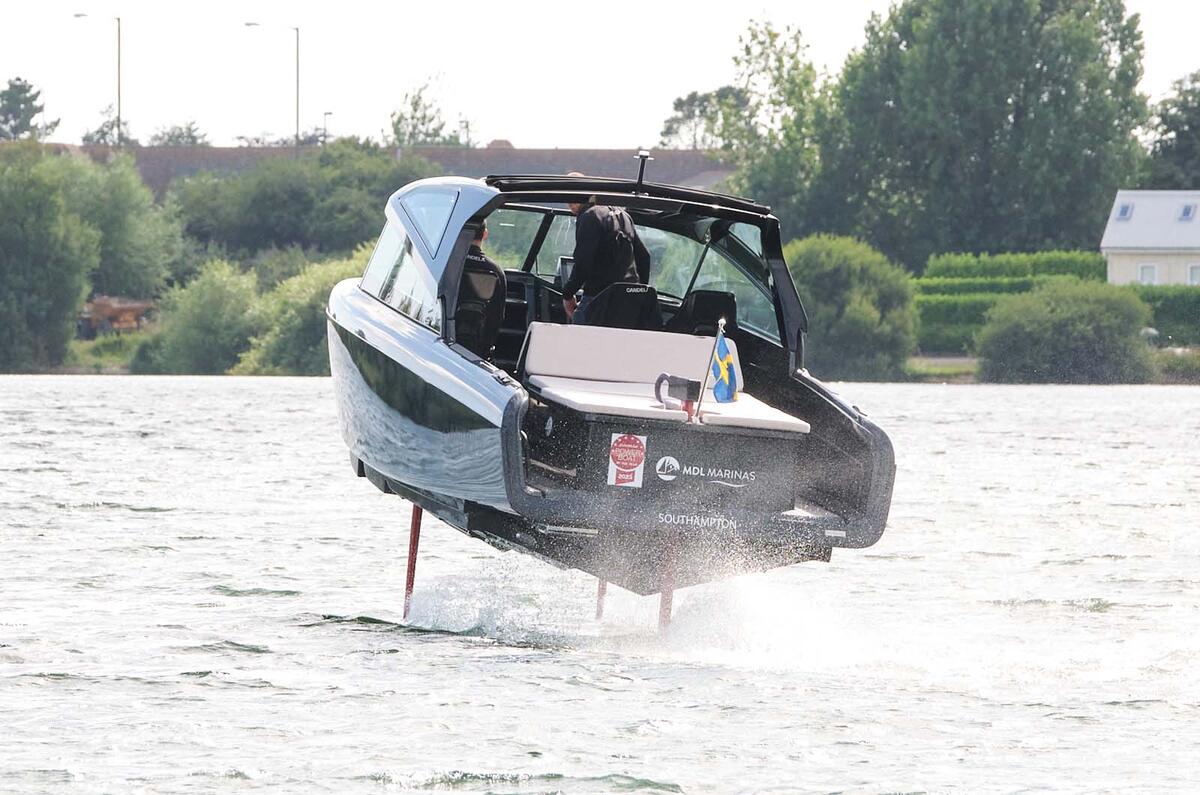Rising star: we go for a ride in Polestar's new electric boat

Polestar. The ultra-cool Scandinavian design – all minimalist aesthetic, stripped-back functions, sustainable fabrics, gold highlights and sans-serif fonts – is absolutely what you would expect from the style-focused brand.
Except… you don’t have to look hard to spot that the Candela C-8 Polestar Edition isn’t really a Polestar. It’s not even a car. It’s a boat. A super-stylish, ultra-modern electric hydrofoil, sure, but it’s absolutely a boat.
But, well, there’s more Polestar in Candela’s fast-growing range of hydrofoils than you might expect, because the partnership between the two Swedish firms extends beyond a styled-up special edition. Deep down in the hull of Candela’s craft you will find Polestar’s 69kWh battery pack as seen in the 2, along with the same 135kW DC fast-charging system. It’s not quite an amphibious car, but this is a genuine technical partnership.
It’s a very natural partnership too: there’s a real philosophical link between Polestar and Candela.
The Stockholm-based boat maker was founded in 2014 by Gustav Hasselskog with a mission to develop electric boats that offered significantly more range and speed. It had a prototype running in late 2016 and its first boat went into series production in 2019. Electric boats face tougher challenges than cars: water is a very literal drag on range.
Pushing a boat through even smooth water takes a vast amount of energy and that becomes amplified when things get rough. The way to maximise range? Get the boat as far out of the water as possible.
Candela’s hydrofoils follow the same principle as America’s Cup yachts: once they reach a certain speed, ultra-light C-foil hydrofoils are deployed, lifting the hull of the boat out of the water. “We make regular boats,” says Candela exec Mikael Mahlberg. “They just happen to be electric and fly.”
The hydrofoils can be deployed once the boat reaches 16 knots (about 18mph), which lifts the mass of the boat about a metre above the water, from where it can reach a top speed of 30kts (35mph) – while using a claimed 80% less energy than a conventional craft.
And that makes it efficient enough for an electric powertrain. At a standard cruising speed of 22kts, the C-8 has a range of 57 nautical miles. “The aim was to offer the same performance and range as a regular boat,” says Mahlberg.
Candela produces a range of craft. There’s the C-7 and the C-8 ‘leisure’ craft, which seat up to eight people, and the P-8 and P-12 ferries that have room for up to 30 passengers.
So far, it has sold around 150 C-8s, and the ferries are attracting interest as commuter craft, particularly because the lack of wake when they’re ‘flying’ makes them well suited for busy harbours.
Of course, making a flying boat isn’t easy and Candela has had to draw on ideas from the marine, automotive and aviation worlds to make it happen. That explains the battery and charger deal with Polestar, which leaves Candela freer to focus on the key technology to make its boats fly better.
For starters, its machines are made from carbonfibre to minimise weight. The Polestar-powered DC version of the C-8 weighs 1750kg, which isn’t bad for an 8500mm-long, 2500mm-wide boat.
Candela has also had to develop its own outboard powertrain, called the C-Pod. Unlike a conventional outboard motor that is mounted at the rear of the boat with the propeller dangling in the water, the C-Pod has a shape that resembles a torpedo, largely because it serves much the same purpose: it is mounted at the bottom of the rear hydrofoil so is entirely underwater.
Each C-Pod contains a pair of electric motors, driving a pair of contra-rotating propellers with a total of 67bhp. That’s more efficient than a single motor. At higher speeds, the pressure in the flow around a large propeller creates a vacuum that adds noise and inefficiency.
There’s also a lot of computing power packed into a Candela boat, including fly-by-wire steering and a ‘Flight Controller’ system that takes sensor data from the boat’s perimeter and can adjust the position of the boat up to 100 times per second.
Speaking of computing power, much as in a car, you will also find a 15.4in touchscreen near the steering wheel, with features such as built-in navigation. Obviously, you can also download an app to check your battery status from dry land, although, as of yet, there’s no Apple BoatPlay function.
While all of Candela’s craft are clearly style-focused, the Candela C-8 Polestar Edition adds in solid-grey exterior paint, marine-certified seat fabric taken from Polestar cars and gold design elements.
It’s offered in open, T-top (with an extender shade above the driver) and hard-top forms, with prices from €400,000 (£335,000).
There’s clearly demand for the firm’s products, as those C-8 sales figures and interest in its ferries show. In a short time, Candela has become a leading player in the electric boat space – and it seems the firm could fly even higher in future, especially with access to proven electric car technology.
So what’s in it for Polestar, beyond finding a buyer for its batteries? Well, much like Candela has recruited expertise from multiple industries to develop its technology, so Polestar has shown a willingness to tap into other areas.
For its ongoing Polestar 0 project to develop a fully carbon-neutral car, it is working with a range of partners from a variety of industries, and it also has a partnership with Swedish electric motorbike firm Cake.
It’s about sharing technology, ideas and philosophies in the still-developing electric mobility world. Don’t expect an amphibious Polestar car any time soon – but it’s possible ideas from an electric flying boat could end up on future vehicles.
Flight check
So what is it like to go flying in an electric boat? Full disclosure: our recent outing at Chichester Watersports was brief. The venue isn’t really designed for a hydrofoil boat, and an abundance of seaweed limited the ‘flying’ potential. But it was still a notable experience.
Much like with an electric car, it’s the lack of noise you notice, with the minimal sound of the motor initially hidden by the splashing of the waves. When the boat reaches flying speed, the movement of the C-8 rising out of the water is remarkably smooth, and without liquid lapping against the hull, it becomes disarmingly still.
And even though the boat is being lifted into the air by three narrow fins, it never feels unstable. It’s quite the way to travel.


Verwandte Nachrichten
